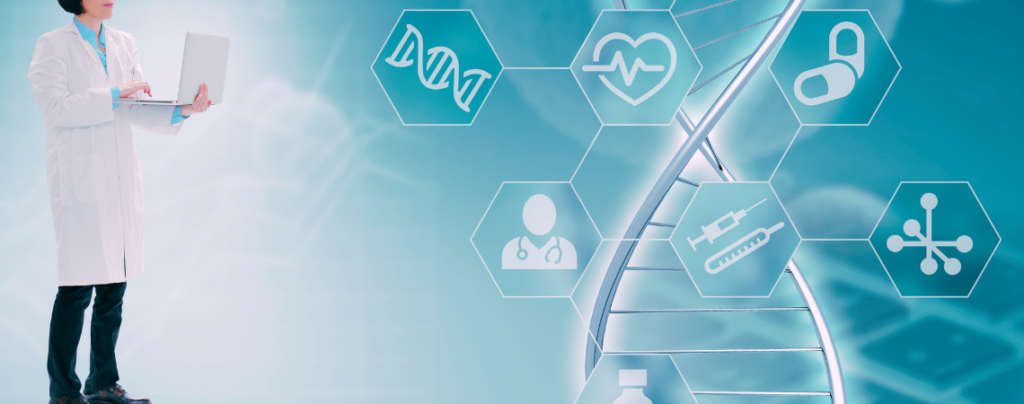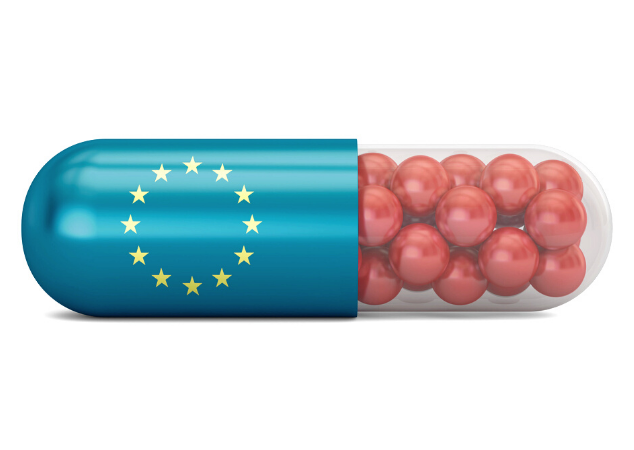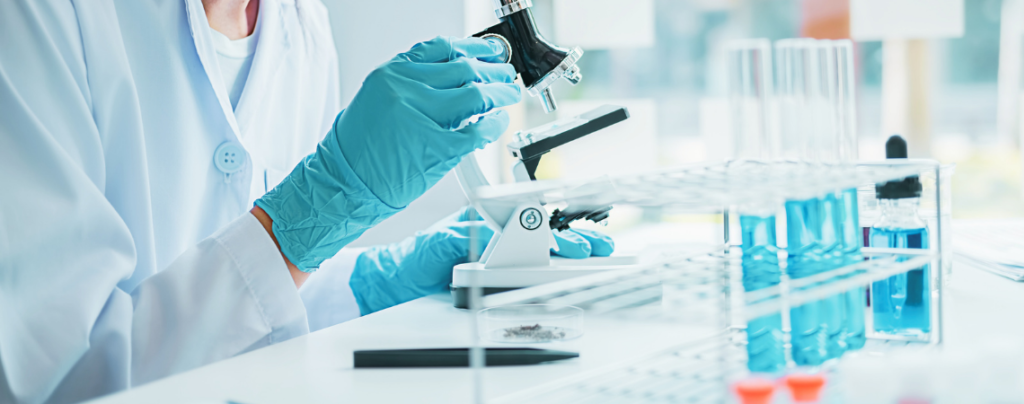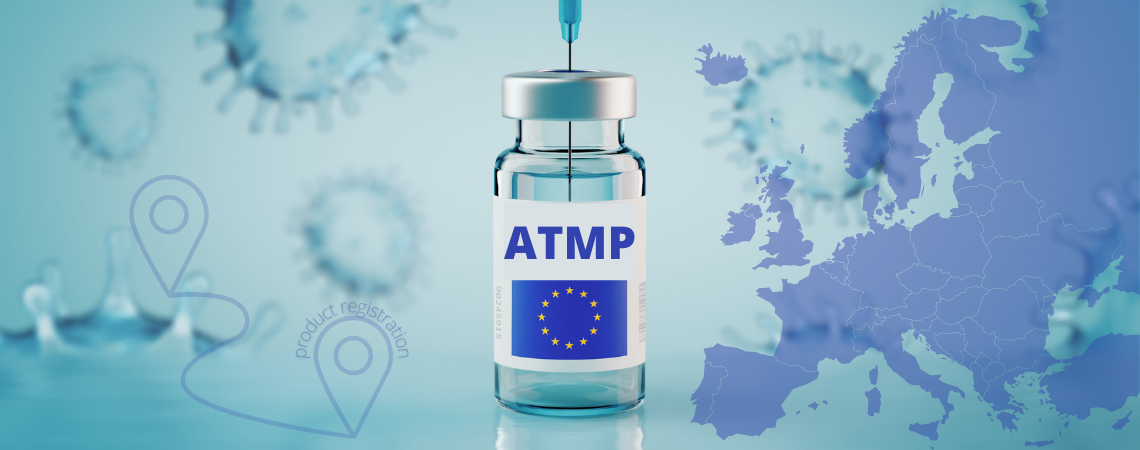Advanced Therapy Medicinal Products (ATMPs) represent a fast-growing field of therapies consisting of cellular or genetic components that revolutionize the treatment approach of many previously incurable diseases. This field has attracted significant attention in recent years. Moreover, it is expected that the number of new developed and authorised ATMPs is going to increase significantly over the next few years as a results of the blossoming science in this area.
When developing a new ATMP, it is extremely important to understand the relevant regulations and key procedural aspects. In the European Union (EU) the regulatory framework for ATMPs is primarily established in the Directive 2001/83/EC but also further in a number of other Directives and Regulations applicable in EU member states. All the regulations in force ensure that new medicinal products classified as ATMPs are subject to appropriate assessment by the European Medicines Agency (EMA). It should guarantee their appropriate quality, safety and efficacy in clinical trials, and further in patient population, when finally granted a marketing authorisation. Failure to meet the requirements may significantly delay or even hold a product development and/or increase its costs. Therefore, understanding the requirements that ATMPs must meet as well as familiarity with the relevant registration procedures are important factors to successfully lead the product to Marketing Authorization (MA). This article presents the most important aspects, that should be considered by a company or public institution, when developing an ATMP. The diagram below shows the most important steps in the process of development and registration of a new ATMP. Detailed information on each step can be found in the following sections of this article.
Does the product meet the ATMP criteria?

The first question to be answered when designing a new product that consists of cellular or genetic components is its classification (detailed description below). It is conducted by the Committee for Advanced Therapies (CAT) on request and on basis of information provided by a company/non-profit organization. The CAT is a special part of EMA, responsible for assessing the quality, safety and efficacy of ATMPs and following scientific developments in the field. This body also performs the primary evaluation of ATMPs that are being developed and contributes to other specific activities of the EMA related to ATMPs such as scientific recommendations.
In the EU an Advanced Therapy Medicinal Product is defined as any of the following medicinal products for human use:
- Gene Therapy Medicinal Product (GTMP) defined as “(a) an active substance which contains or consists of a recombinant nucleic acid used in or administered to human beings with a view to regulating, repairing, replacing, adding or deleting a genetic sequence, (b) its therapeutic, prophylactic or diagnostic effect relates directly to the recombinant nucleic acid sequence it contains, or to the product of genetic expression of this sequence”. However, these products do not include vaccines against infectious disease, which may contain genetic material as an active substance.
- Cell Therapy Medicinal Product (CTMP) defined as “(a) contains or consists of cells or tissues that have been subject to substantial manipulation so that biological characteristics, physiological functions or structural properties relevant for the intended clinical use have been altered, or of cells or tissues that are not intended to be used for the same essential function(s) in the recipient and the donor, (b) is presented as having properties for, or is used in or administered to human beings with a view to treating, preventing or diagnosing a disease through the pharmacological, immunological or metabolic action of its cells or tissues.”
- Tissue Engineered Product (TEP) contains or consists of engineered cells or tissues of human or animal origin, or both.
The ATMP Regulation also includes so called “Combined ATMPs” which contain a medical device as an integral part of the product. It is noted, if a product is intended to treat/prevent a viral infection, it is classified as a vaccine.
Due to the complexity and nature of ATMPs, their classification into the appropriate category is often problematic. Hence, the CAT delivers free scientific recommendations in that regard. The procedure takes 60 days after receipt of the request. In addition, the EMA publishes a list of classified ATMPs under development with justification of their classification, which is very useful for other companies developing ATMPs.
How to authorise ATMP in the EU?

Medicinal products in the EU can obtain MA under several different authorisation procedures such as National, Decentralized/Mutual Recognition or Centralised Procedure. Nevertheless, it is highlighted that for ATMPs, only Centralised Procedure is possible. This comes with certain benefits, such as a single application and evaluation, as well as a single MA throughout the whole EU. By definition, it is however, not possible to obtain the MA for ATMP only in selected countries belonging to the Community or dealing only with National Agencies throughout registration. It is noted that the Centralised Procedure itself is strictly formalized in terms of documentation (eCTD) as well as timeline of submission. Before submission of Marketing Authorisation Application (MAA) it is necessary to fulfill Pre-Authorisation requirements such as submission of eligibility request and letter of intent. This step is also strictly formalized and described in the relevant guidelines available on EMA websites.
What data are needed to obtain MA?
In accordance with the EU legal framework, Medicinal Product must demonstrate safety, efficacy and suitable quality for use in humans to obtain MA. In recent years, EMA has published a number of guidelines for the research and development of new ATMPs (all official documents related to ATMPs can be found on the EMA website in the tab “Human regulatory”). Despite that, there is plethora of various aspects that a new product is analysed for, the primary one is the benefit-risk assessment related to human health. This approach is based on weighing the desired effects or benefits of a new medical product against its undesired effects or risks. EMA can recommend the authorization of a Medical Product which benefits are judged to be greater than their risks. The following set of information need to be available prior the application for MA:

- Efficacy – the ability of the product to induce the desired therapeutic effect. The data to address this issue should be collected throughout the development process in the form of non-clinical studies (in vitro and in vivo studies in animal and/or animal models of disease to confirm and obtain information on the mechanism of action) and clinical studies in humans. It should be highlighted that some studies, such as toxicological studies, must be performed in GLP laboratories.
- Safety – confirming the tolerability of a product and minimization and/or management of potential adverse events. As mentioned above regarding the risk-benefit ratio, only products with the beneficial therapeutic effects over undesired effects can be authorised as Medical Products.
- Quality – parallel to the clinical properties of a product itself, the appropriate chemical quality, such as activity or purity of a product should be determined throughout the development. This is important especially because quality of a product may affect the patient’s safety in the clinical phase as well as the legibility of the data obtained, confirming efficacy. As compared to other medicinal products, the manufacturing of ATMPs is generally an extremely complex process. Therefore, even minor changes in the manufacturing process can significantly affect the quality of the product, and thus the effectiveness and safety for patients. Particular attention should be paid to the quality of the components used in the manufacturing process, especially animal-derived components such as FBS (fetal bovine serum) due to the risk of transmitting zoonoses. Another important issue is to ensure the stability of the product, understood not only as quantitative stability, for example the percentage of individual cell fractions or vector copies, but also the functional stability of the product, closely related to efficiency. Therefore, it is extremely important to define manufacturing process and its associated analytical and stability testing procedures during development (Chemistry, Manufacturing and Control (CMC) studies). Also, a set of quality attributes of a finished product that correlate with the efficacy and safety of use in patients (product specification) needs to be established. All products, both tested in clinical trials and authorised, must be manufactured in accordance with GMP. The European Commission has adopted the Guidelines on Good Manufacturing Practice (GMP) specific to Advanced Therapy Medicinal Products. The guideline describes requirements in the fields of quality and risk management and production and quality control applicable to ATMPs. Inadequate planning of the manufacturing of the product or inadequate quality of the components used can significantly delay commercialization. Therefore, quality issues should be carefully planned in the initial stages of product development and of course maintained thereafter, throughout the life-cycle of a product.
It should be noted that many ATMPs are classified as Genetically Modified Microorganisms (GMMs). The development of these products requires taking into account the relevant legal regulations in this area, such as permits to work with the GMM and relevant certificates. In this case, the scope of the requirements and procedures depends on the country.
How to approach the ATMP clinical trials?
In the standard clinical development of a medicinal product, after positive evaluation of non-clinical data, the Investigational Medicinal Product (IMP) is progressed into clinical phase. Usually many separate clinical trials are needed to generate safety and efficacy of data in human. Typically, these studies begin with Phase I with healthy volunteers and, after positive results, progress to further phases of clinical trials. However, many ATMPs are developed for a small target patient population or as autologous products (the same patient is the donor and recipient of the transplant). Therefore, standard clinical trial approaches for these products may not be appropriate. In addition, due to potential long-term effects of an ATMP, the ongoing monitoring of clinical trial participants may be needed for many years after therapy. Due to complicated nature of ATMPs, in 2019 a specific guideline was developed by the European Commission on Good Clinical Practice (GCP) in the terms of clinical trials conducted with ATMPs. When planning a clinical trial with an ATMP, mentioned guideline should be considered in conjunction with other ATMP guidelines. When there is doubt, a case by case approach based on risk analysis and scientific evidence is recommended.
Is the product for rare disease?

In many cases, ATMPs are used to treat conditions that are relatively rare in the general population. However, most pharmaceutical companies do not invest in drug research of rare diseases due to their low future rate of return. For this reason, in 2000, EMA introduced a new facilitation for such products called Orphan Medicinal Products designation. It can be applied if a product is intended for the diagnosis, prevention or treatment of a life-threatening, chronical or serious condition affecting not more than 5 in 10 000 people. The full set of criteria that a product must meet to qualify as Orphan Medical Product are included in the appropriate Regulation. Orphan drug status granted in the EU, gives market exclusivity for 10 years following the granting of the MA and additional benefits such as fee waivers or discounts for the regulatory procedures. In principle, the granted market exclusivity for orphan medicine protects against registration, or even acceptance of an application for registration of similar products, unless a new applicant can show that their product is more effective, safer or has other clinical advantages. In case of Orphan-designated Medicinal Products, which are also pediatric products, the market exclusivity may be extended up to 12 years. The possibility of applying for Orphan Medicinal Designation should be considered at an early stage of product development.
Can the product be used in children?
As with all medicinal products, the efficacy and safety of ATMPs must be demonstrated in appropriately designed clinical trials. In 2007 EMA introduced a Regulation, according to which participation of the pediatric population needs to be considered in clinical trials for all new medicinal products for human use (including ATMPs) . Therefore, when considering clinical trials plan, it is important to answer the following question: Can the product be used in children? If so, it is the obligation of the Applicant to establish the Pediatric Investigation Plan (PIP). PIP defines the clinical studies to be conducted in pediatric population to demonstrate that a new medicinal product is safe and effective in all subsets of the pediatric population. It should be noted that the PIP is not mandatory, if there is already sufficient information to demonstrate safety and efficacy in adults while further development in pediatric populations could delay the MAA submission. A waiver is also possible when the drug development for children is not appropriate, for example when a disease only affects the adults or the product is likely to be unsafe in the pediatric population.
How to save a life before MA – Compassionate Use and Hospital Exemption
In some situations, patients who have a disease for which there are no effective authorized therapies, and may not be able to participate in clinical trials (e.g. patient does not meet inclusion criteria) may benefit from an unregistered product. In such cases, a patient with a serious, life-threating disease may be treated with an unauthorized product outside of clinical trials as part of a Compassionate Use program (also called Extended Access). Compassionate Use are coordinated and implemented by each Member States, which set their own rules and procedures. However, national authorities can ask EMA for an opinion on how to administer, distribute and use certain medicines for Compassionate Use. In general, even though safety profile and dosage guidelines may not be fully established for the product, it must be undergoing clinical trials or have entered the MAA process.
In some rare diseases ATMP may be developed to treat even a single patient, without commercial implication. Such cases are quite common, for example in university hospitals, where patient-tailored solutions are created to save lives of patients with an incurable, ultra-rare diseases. For this reason, a so called Hospital Exemption has been introduced. It allows use of the given ATMP without a MA under certain circumstances. Such treatment is carried out under the responsibility of the physician and is only to be used in individual cases. The quality of ATMPs used under the Hospital Exemption should be in line with the ATMP regulation designed for commercialization. In addition, a competent national authority must authorise Hospital Exemption for each ATMPs used.
It should be emphasized that the use of medicinal products without proper authorizations or consent is illegal in the EU. Unfortunately, in recent years, many pseudo-therapies, mostly referring to stem cell therapies, have emerged in the EU. The EMA has also noticed this problem publishing the official document, highlighting that these “therapies” may not only be ineffective, but also harmful, and advising patients and the general public against their use.
What are the Types of Marketing Authorizations in the EU
The main goal of the product development phase is to obtain a MA. During this period, the applicant collects data confirming the effectiveness and safety of the product and appropriately describes them in the dossier. Based on provided data, the EMA makes a decision on the approval of the product. As mentioned earlier, in the EU in the case of ATMPs, only registration via the Centralised Procedure is possible. Depending on the scope and quality of data obtained during development, the MA may be granted in three categories, respectively:
- standard MA – is granted when efficacy, safety and quality have been demonstrated and no additional data is required. A standard MA is granted on the basis of a positive benefit-risk assessment supported by comprehensive non-clinical and clinical data.
- conditional MA – is granted when an unmet medical needs of patients justify the access of a medicine to patients before the comprehensive data, normally required for standard registration, is available. The available data needs to indicate that the potential benefits outweigh the risks of treatment. In addition, the applicant should provide comprehensive data in the future. Conditional MA is valid for one year and can be renewed annually.
- MA under exceptional circumstances – may be granted for medicines when it is difficult to provide comprehensive data on the efficacy and safety under normal conditions of use, for example condition to be treated is rare or collection of full data is not possible even after MA granting or is unethical.
How to speed up the registration?
PRIME is a special regulatory tool dedicated for breakthrough therapeutic solutions. This voluntary scheme was launched in 2016 to enhance support for the development of products that target an unmet medical needs. The basis of the PRIME scheme is to enhance interactions between developer of innovation and the Agency in order to accelerate development and make the product available to patients as early as possible. The PRIME is based on the existing regulatory tools already available such as scientific advice (dialogue with EMA on the new drug development program) and Accelerated Assessment when the procedure usually takes 150 assessment days, rather than 210 for the standard assessment (not include clock stops when applicant has to provide additional information). The PRIME application should be considered by developer at the beginning of product development.
ATMP summary
ATMPs attract growing attention, because they have great potential to revolutionize medicine and cure many previously incurable diseases. Due to their nature their development is complex and usually far more expensive than development of chemical or even biological medicines. ATMPs are heavily regulated by number of recently published EMA documents that help find the requirements that a new ATMP must meet to obtain MA. It should be noted that incorrect R&D planning may have serious consequences such as significant increase in costs, delaying a registration or even holding the whole project. Many companies involved in the development of ATMPs are small researched-based entities or universities that do not have extensive regulatory knowledge, necessary to plan and carry out the registration process effectively and efficiently. These entities often focus on purely scientific aspects forgetting the broader regulatory scope. Therefore, at various stages of the development process, it is recommended to cooperate with specialized consulting companies or experts. Eventually, it should benefit all in terms of cost reduction and speeding up the registration process and ultimately those who need these products to improve or even save their lives. If you liked this article, visit the News tab for other interesting publications from the pharmaceutical industry.
Do you have any questions about ATMP ? Contact us directly, our experts will be happy to provide you more details.


